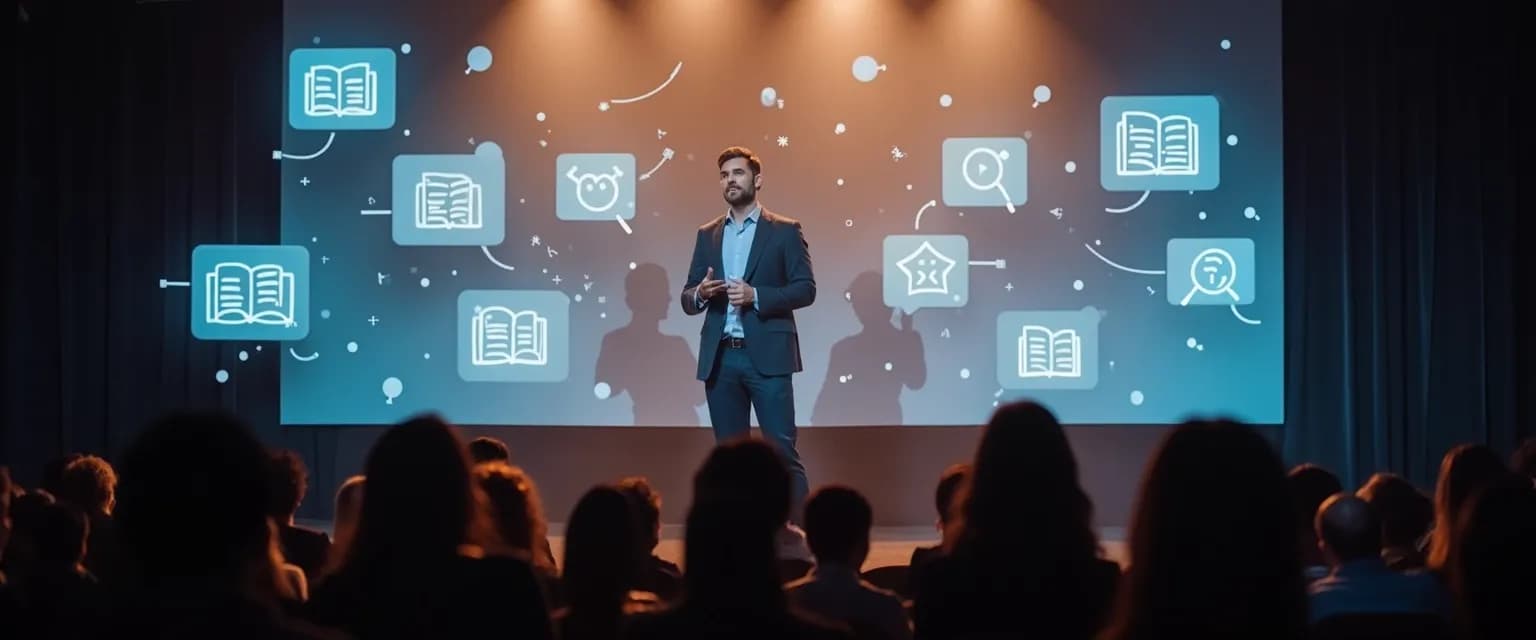7 Storytelling Techniques to Transform Your Presentation on Emotional Intelligence
Ever watched your audience's eyes glaze over during your presentation on emotional intelligence? You're not alone. Even the most crucial EI concepts can fall flat without the right delivery. The secret weapon? Storytelling. A powerful presentation on emotional intelligence doesn't just deliver facts—it creates an experience that resonates emotionally with listeners. Brain science confirms this works: our neural pathways activate differently when absorbing narrative versus dry data, creating stronger memory imprints and deeper understanding.
When you incorporate storytelling into your presentation on emotional intelligence, you transform abstract concepts into relatable human experiences. This isn't just about entertainment—it's about effectiveness. Research shows we remember stories up to 22 times more effectively than facts alone. Ready to elevate your next presentation? These seven storytelling techniques will help you deliver a memorable emotional intelligence training that actually sticks with your audience.
The First 3 Storytelling Techniques for Your Emotional Intelligence Presentation
1. Personal Vulnerability Narratives
The most compelling presentation on emotional intelligence starts with authenticity. Share a moment when you struggled with emotional regulation or empathy. When you reveal your own EI journey—complete with setbacks and breakthroughs—you create immediate connection. Your audience thinks: "If they struggled too, maybe I can improve as well."
Example: Begin with a story about misreading a colleague's signals during a high-stakes meeting, and how developing better emotional awareness transformed your workplace relationships.
2. Before-and-After Transformation Stories
Structure your presentation on emotional intelligence around clear transformation narratives. Paint a vivid picture of "before EI skills" versus "after EI skills" scenarios. These comparative stories help audiences visualize the concrete benefits of emotional intelligence development.
The key is specificity: describe exactly how emotional intelligence techniques changed outcomes in recognizable workplace situations. This helps listeners envision similar transformations in their own environments.
3. Character-Driven Scenarios
Create relatable workplace characters to demonstrate EI concepts in action. These "composite characters" (fictional but realistic) allow you to illustrate emotional intelligence principles without exposing real individuals. Your audience will see themselves and their colleagues in these scenarios, making abstract concepts immediately applicable to their daily interactions and leadership presence development.
4 Advanced Storytelling Methods to Enhance Your Emotional Intelligence Presentation
4. Metaphor Mapping
Complex emotional intelligence concepts become instantly accessible through well-chosen metaphors. Compare emotional regulation to a thermostat rather than an on/off switch. Describe empathy as "trying on someone else's glasses" rather than just "understanding others."
Visual metaphors particularly enhance retention. In your presentation on emotional intelligence, use images that reinforce these comparisons—like an actual thermostat when discussing emotional regulation—to create powerful mental anchors.
5. Audience Participation Stories
Transform passive listeners into active participants by involving them in collaborative narratives. Start a scenario but let audience members suggest how it might unfold with different EI approaches. This technique creates investment in the outcome and demonstrates how emotional intelligence operates in varied situations.
6. Data-Driven Storytelling
Numbers alone rarely inspire action. Instead, humanize statistics through narrative framing. Rather than stating "67% of teams with high EI outperform others," tell the story of a specific team that embodied emotional intelligence principles and achieved remarkable results. This workplace stress management approach bridges the gap between analytical and emotional processing.
7. Micro-Stories
Brief, powerful anecdotes—sometimes just 30 seconds long—can illustrate specific emotional intelligence components throughout your presentation. These "story spikes" maintain engagement while reinforcing key points. Sprinkle these throughout your presentation on emotional intelligence to maintain emotional connection even during more technical sections.
Implementing These Storytelling Techniques in Your Next Emotional Intelligence Presentation
Ready to transform your presentation on emotional intelligence? Start by identifying one personal story that demonstrates an EI concept, then build outward. Balance emotional narratives with factual content by using the 60/40 rule: aim for about 60% story-driven content supported by 40% data and explanation. Remember that even the most powerful presentation on emotional intelligence requires practice—rehearse your stories until they flow naturally while maintaining authenticity.




